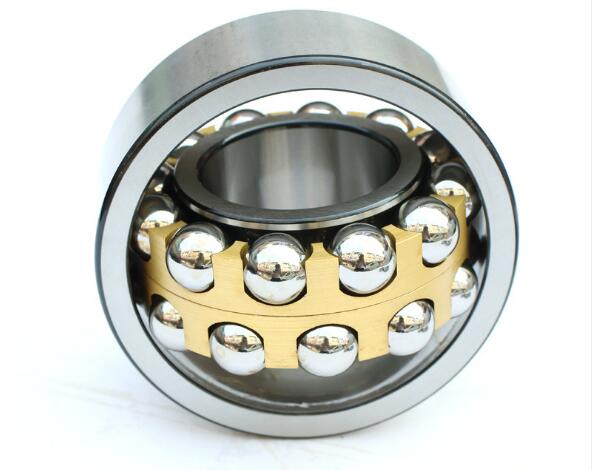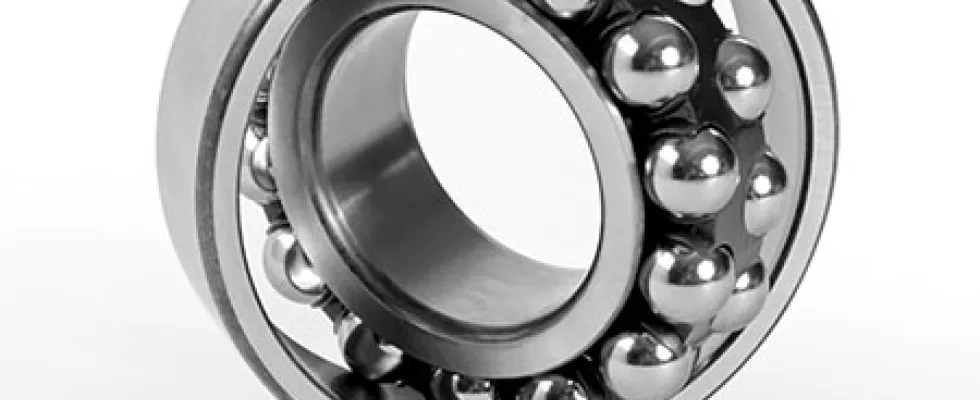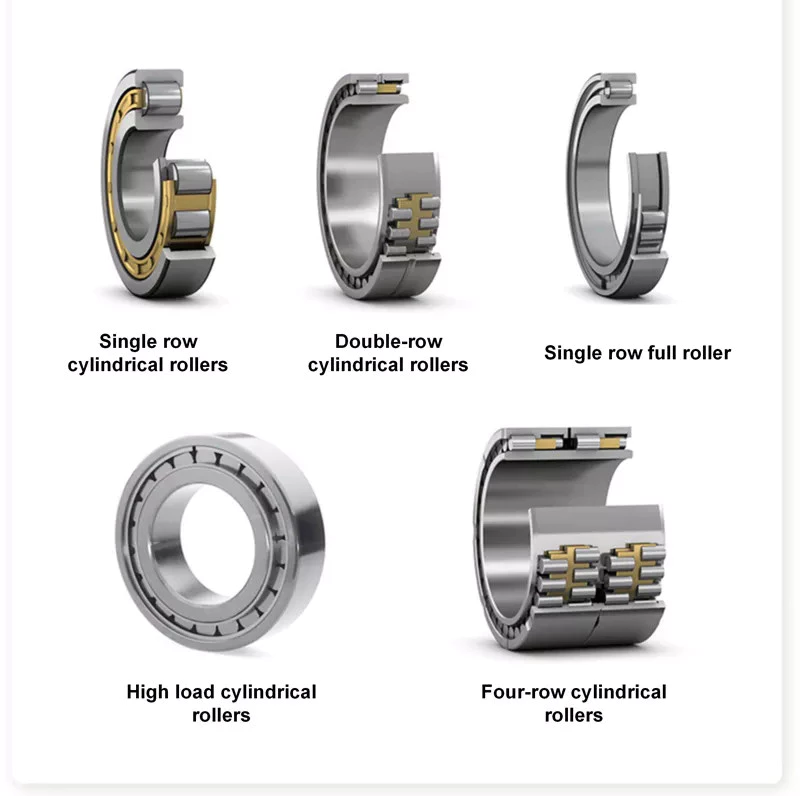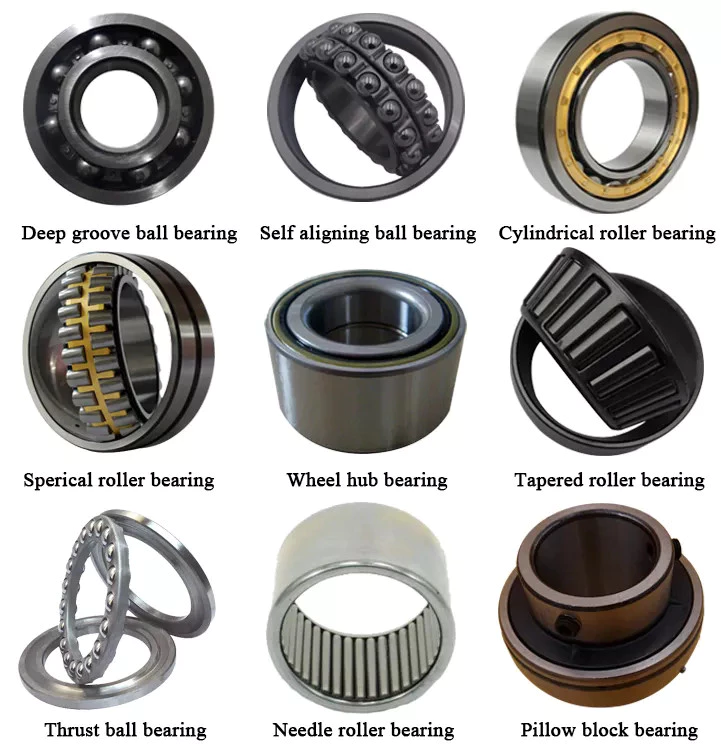Product Description
Product Description
Our Products:
Tapered, cylindrical, ball bearings, self-aligning roller bearings, base bearings, car hub bearings, truck hubs, and other products.
We can customize the bearing according to the drawings or samples provided by the customer.
Detailed Photos
Product Parameters
| Double Row Self-aligning Ball Bearing | |||
| 1204 | 1305 | 11204 | 2205 |
| 1205 | 1306 | 11205 | 2205K |
| 1206 | 1307 | 11206 | 2206 |
| 1207 | 1307 | 11207 | 2206K |
| 1208 | 1308 | 11208 | 2207 |
| 1209 | 1309 | 11209 | 2207K |
| 1210 | 1310 | 11210 | 2208 |
| 1211 | 1312 | 11211 | 2208K |
| 1212 | 1313 | 11212 | 2209 |
| 1213 | 1314 | 11214 | 2209K |
| 1214 | 1315 | 11215 | 2210 |
| 1215 | 1316 | 11216 | 2210K |
| 1216 | 1318 | 11217 | 2211 |
| 1217 | 1320 | 11218 | 2211K |
| 11305 | 2212 | ||
| 11306 | 2212K | ||
| 11307 | 2213 | ||
| 11308 | 2213K | ||
| 11309 | 22147 | ||
| 11310 | 2214K | ||
| 11311 | 2215 | ||
| 11312 | 2215K | ||
| 11313 | 2216 | ||
| 11314 | 2216K | ||
| 11315 | 2217 | ||
| 11316 | 2217K | ||
| 11317 | 2304 | ||
| 11318 | 2304K | ||
MAIN PRODUCTS
Tapered roller bearings, cylindrical roller bearings, ball bearings, self-aligning roller bearings, base bearings, car hub bearings,
truck hub bearings and other products, We can customize the bearing according to the drawings or samples provided by the
customer
Application
Grain machinery, textile machinery, washing machinery, engineering machinery, industrial deceleration machinery, woodworking
machinery,papermaking machinery, mining machinery, coal mining machinery, lifting machinery, construction machinery,
large transportation equipment,chemical machinery, petroleum machinery, metallurgical industry, large steel mills, cement plants,
energy industry, automobiles, trucks, etc.
Packaging & Shipping
STHangZhouRD PACKAGING:
Plastic bag + single box + carton + tray;
Industrial packaging + carton + pallet;
We also can According to your requirements change.
Company Profile
HangZhou CZPT Trading Co., Ltd. was founded in August 2014. It is a bearing manufacturer integrating
research, development, and sale of bearings, with a floor area of 18,000 square meters and a plant area of 4,800
square meters. The company has a state-level enterprise technology center and a number of provincial high-tech
enterprises with strong technical strength. our company was honored as a competitive brand in the market.
Equipped with modern production equipment and advanced detection instruments, the company especially
produces Bearings including 3 varieties of spherical roller bearings, namely cylindrical roller bearings,
tapered roller bearings and thrust spherical roller bearings, Automobile Hub Bearing, to replace imported
high-end products.
With the precision of grade P0, grade P6 P5 P4, we bearings are widely used in complete products in metallurgical, mining, petroleum, chemical, coal, cement, papermaking, wind power, heavy machinery, engineering machinery, and port machinery industries. With self-run import & export rights, we sell our products across China and in tens of other countries and areas such as the United States, Canada, Italy, Russia, Germany, and South Africa.
We would like to serve customers around the world with our reliable products, reasonable prices, and attentive service. The leading products of the company cover 3 main categories which include more than 3,000 types of bearing products.
FAQ
1.What is your Before-sales Service?
Offer to bear related consultation about technology and application;
Help customers with bearing choice, clearance configuration, products’ life and reliability analysis;
Offer highly cost-effective and complete solution program according to site conditions;
Offer localized program on introduced equipment to save running cost
2.What is your latest delivery time?
If the goods are in stock, usually 5-10 days. Or if the goods are not in stock, it is 15-20 days, which is based
on the quantity.
3.Does your company have quality assurance?
Yes, for 2 years.
4.What is the competitiveness of your company’s products compared to other companies?
High precision, high speed, low noise.
5.What are the advantages of your company’s services compared to other companies?
Answer questions online 24 hours a day, reply in a timely manner, and provide various documents required
by customers for customs clearance or sales. 100% after-sales service.
6.Which payment method does your company support?
30% deposit,balance payment before delivery.
7.How to contact us quickly?
Please send us an inquiry or message and leave your other contact information, such as phone number,
account or account, we will contact you as soon as possible.
/* January 22, 2571 19:08:37 */!function(){function s(e,r){var a,o={};try{e&&e.split(“,”).forEach(function(e,t){e&&(a=e.match(/(.*?):(.*)$/))&&1
| OEM: | Available |
|---|---|
| Rolling Body: | Roller Bearings |
| The Number of Rows: | Single |
| Outer Dimension: | Small (28-55mm) |
| Material: | Bearing Steel |
| Spherical: | Non-Aligning Bearings |
| Samples: |
US$ 0/Piece
1 Piece(Min.Order) | |
|---|
| Customization: |
Available
| Customized Request |
|---|

How do innovations and advancements in self-aligning bearing technology impact their use?
Advancements and innovations in self-aligning bearing technology have a significant impact on their use in various industries. Here’s a detailed explanation:
- Improved Performance:
Innovations in self-aligning bearing technology often result in improved performance characteristics. These advancements can include:
- Load Capacity: New bearing designs and materials can enhance the load-carrying capacity of self-aligning bearings, allowing them to withstand higher loads or operate under more demanding conditions.
- Speed Capability: Advancements in bearing manufacturing techniques and materials can increase the maximum rotational speed at which self-aligning bearings can operate effectively, enabling their use in high-speed applications.
- Friction Reduction: Innovations in bearing design, lubrication, and surface treatments contribute to reducing friction and energy losses, resulting in improved efficiency and reduced operating costs.
- Sealing and Contamination Resistance: New sealing technologies and materials can enhance the sealing performance of self-aligning bearings, providing better protection against contaminants, moisture, and harsh environmental conditions.
- Temperature and Corrosion Resistance: Advances in bearing materials and coatings enable self-aligning bearings to withstand extreme temperatures, aggressive chemicals, and corrosive environments, expanding their range of applications.
- Extended Service Life:
Innovations in self-aligning bearing technology often result in improved durability and longevity. These advancements can include:
- Materials: The development of new bearing materials, such as advanced steels, ceramics, or composites, can significantly enhance the bearing’s resistance to wear, fatigue, and surface damage, leading to extended service life.
- Lubrication: Advancements in lubrication technologies, such as the use of solid lubricants or advanced grease formulations, can provide better film formation, reduce friction, and minimize wear, thereby increasing the bearing’s operating life.
- Surface Treatments: Innovative surface treatments, such as coatings or finishes, can improve the bearing’s resistance to corrosion, wear, and fretting, contributing to longer service intervals and reduced maintenance requirements.
- Condition Monitoring: The integration of sensor technologies and data analytics in self-aligning bearings enables real-time monitoring of operating conditions, allowing for proactive maintenance and early detection of potential failures, thus maximizing the bearing’s service life.
- Application Expansion:
Advancements in self-aligning bearing technology often lead to an expansion of their application range. These advancements can include:
- New Industries: Innovations in self-aligning bearing technology can enable their use in industries or applications where they were previously not feasible. This opens up opportunities in emerging sectors, such as renewable energy, electric vehicles, robotics, or medical devices.
- Challenging Environments: Improved performance characteristics, such as enhanced sealing, temperature resistance, or contamination resistance, allow self-aligning bearings to be deployed in challenging environments, including offshore installations, high-temperature processes, or chemically aggressive applications.
- Specialized Applications: Advancements in self-aligning bearing technology can lead to the development of specialized bearing variants tailored for specific applications, such as high-speed machining, precision equipment, or demanding industrial automation systems.
Overall, innovations and advancements in self-aligning bearing technology bring about enhanced performance, extended service life, and expanded application possibilities. These advancements drive improvements in industrial productivity, reliability, and efficiency, making self-aligning bearings a valuable component in a wide range of industries and applications.

What are the potential challenges or limitations associated with using self-aligning bearings in specific industries?
While self-aligning bearings offer many advantages, there are some potential challenges and limitations associated with their use in specific industries. Here’s a detailed explanation of these considerations:
- Load Capacity:
While self-aligning bearings are designed to handle high loads, there are limits to their load-carrying capacity. In industries with extremely heavy or shock loads, such as heavy machinery, mining, or construction, the load demands may exceed the capabilities of self-aligning bearings. In such cases, alternative bearing designs or additional support mechanisms may be required to handle the extreme load conditions.
- Speed Limitations:
Self-aligning bearings may have certain speed limitations due to factors such as centrifugal forces, increased friction, or potential instability at high rotational speeds. In industries that require very high-speed applications, such as aerospace or certain manufacturing processes, specialized high-speed bearings may be more suitable to ensure optimal performance and prevent premature failure.
- Temperature and Environmental Constraints:
Self-aligning bearings have specific temperature and environmental constraints that can impact their performance. In industries involving extreme temperatures, aggressive chemicals, or harsh environmental conditions, the choice of bearing materials and lubricants becomes critical. Certain industries, such as oil and gas, chemical processing, or marine applications, may require specialized bearing designs or coatings to withstand the demanding operating conditions.
- Maintenance and Lubrication:
Proper maintenance and lubrication are essential for the reliable operation of self-aligning bearings. In industries where access for maintenance is challenging or where frequent maintenance is not feasible, the longevity and performance of self-aligning bearings may be compromised. Additionally, industries with high contamination or abrasive particles in the operating environment may require more frequent lubrication or specialized sealing arrangements to protect the bearings from premature wear and failure.
- Space Limitations:
Self-aligning bearings have a larger footprint compared to some other bearing designs due to their double-row construction and spherical outer ring raceway. In industries with space constraints or compact machinery designs, the dimensions of self-aligning bearings may pose challenges in terms of integration or fitting within limited spaces. In such cases, alternative bearing designs with smaller profiles may be more suitable.
- Cost Considerations:
Self-aligning bearings can be more expensive compared to certain other bearing types, especially in applications that require larger sizes or specialized configurations. In industries with cost-sensitive considerations, such as consumer products or automotive manufacturing, the higher cost of self-aligning bearings may influence the selection of alternative bearing options that can meet the application requirements at a lower cost.
While self-aligning bearings offer numerous benefits, it is important to carefully evaluate the specific challenges and limitations in each industry or application. By considering these factors and consulting with bearing experts or manufacturers, the most suitable bearing solution can be selected to ensure optimal performance, reliability, and cost-effectiveness.

How do self-aligning bearings differ from fixed or non-self-aligning bearings?
Self-aligning bearings differ from fixed or non-self-aligning bearings in several ways. Here’s a detailed explanation of the differences between these types of bearings:
- Design and Construction:
The design and construction of self-aligning bearings are distinct from fixed or non-self-aligning bearings. Self-aligning bearings have a spherical outer ring raceway, which allows for misalignment compensation. In contrast, fixed or non-self-aligning bearings typically have a cylindrical or tapered outer ring raceway, designed for precise alignment between the shaft and the housing.
- Misalignment Compensation:
The primary difference between self-aligning bearings and fixed or non-self-aligning bearings is their ability to compensate for misalignment. Self-aligning bearings can accommodate angular misalignment, axial misalignment, and shaft deflection, whereas fixed or non-self-aligning bearings have limited tolerance for misalignment and require precise alignment during installation.
- Load Distribution:
Self-aligning bearings distribute the load more evenly across the rolling elements and raceways, thanks to their ability to accommodate misalignment. This helps reduce localized stresses and minimize the risk of premature failure. Fixed or non-self-aligning bearings, without the ability to compensate for misalignment, may experience uneven loading and increased stress on specific areas, leading to accelerated wear and potential failure.
- Friction and Wear:
Due to their misalignment compensation capability, self-aligning bearings help reduce friction and wear. Misalignment in fixed or non-self-aligning bearings can cause increased friction and localized wear, leading to reduced bearing life. Self-aligning bearings distribute the load more evenly, minimizing friction and wear on the rolling elements and raceways, resulting in improved reliability and longevity.
- Application Range:
The different design and misalignment compensation capability of self-aligning bearings make them suitable for a broader range of applications compared to fixed or non-self-aligning bearings. Self-aligning bearings are commonly used in applications where misalignment is expected, such as heavy machinery, conveyor systems, and mining equipment. Fixed or non-self-aligning bearings are typically employed in applications that require precise alignment, such as machine tools or high-precision equipment.
- Installation and Maintenance:
Self-aligning bearings offer easier installation and maintenance compared to fixed or non-self-aligning bearings. The self-aligning capability of these bearings allows for more flexibility during the installation process, accommodating slight misalignments. In contrast, fixed or non-self-aligning bearings require careful alignment procedures to ensure proper functioning. Additionally, self-aligning bearings are often designed for easier maintenance, enabling tasks such as re-greasing or replacement without extensive disassembly.
In summary, self-aligning bearings differ from fixed or non-self-aligning bearings in their design, misalignment compensation capability, load distribution, friction and wear characteristics, application range, and ease of installation and maintenance. These differences make self-aligning bearings particularly suitable for applications where misalignment is expected or dynamic operating conditions are present.


editor by CX 2024-04-17
China Nylon wheel bearing with screw shaft 606zz,608zz,623zz,625zz,626zz,696zz supplier
Kind: BALL, Nylon wheel bearing
Structure: Deep Groove
Applicable Industries: Creating Substance Retailers, Production Plant, Retail
Bore Dimensions: 6 – 20 mm
Design Variety: 606 with screw shaft
Precision Ranking: substantial precision
Seals Type: ZZ
Number of Row: Solitary row
Substance: Plastic -Delrin 1/8822 0571 -85782665
:skye_globe
e-mail:skye(at)ntl-bearing.com
Below information sheet is FYI
| Flange | Open | Shield | Boundary Diameter | ||
| d | D | Df | |||
| F | 681 | 1 | three | 3.eight | |
| F | 691 | one | four | 5 | |
| F | 682 | ZZ | two | 5 | six.one |
| F | 602 | ZZ | 2 | 7 | 8.5 |
| F | 603 | ZZ | three | nine | ten.5 |
| F | 623 | ZZ | three | ten | eleven.5 |
| F | 684 | ZZ | 4 | nine | 10.3 |
| F | 685 | ZZ | five | 11 | twelve.5 |
| F | 605 | ZZ | 5 | 14 | sixteen |
| F | 606 | ZZ | 6 | 17 | 19 |
| F | 626 | ZZ | 6 | 19 | 22 |
| F | 607 | ZZ | 7 | 19 | 22 |
| F | 688 | ZZ | eight | 16 | eighteen |
| F | 608 | ZZ | 8 | 22 | 25 |
| BearingNo | Bored(mm) | O.dD(mm) | WidthB(mm) | Load Rating | Weight(kg) | |||||||||||||||||||||||||||||||||||||||||||||||||||||||||||||||||||||||||||||||||||||||||||||||||||||||||||||||||||||||||||||||||||||||||||||||||||||||||||||||||||||||||||||||||||||||||
| Dynamic | Static | |||||||||||||||||||||||||||||||||||||||||||||||||||||||||||||||||||||||||||||||||||||||||||||||||||||||||||||||||||||||||||||||||||||||||||||||||||||||||||||||||||||||||||||||||||||||||||||
| 695 | five | thirteen | four | .eighty three | .39 | .0571 | ||||||||||||||||||||||||||||||||||||||||||||||||||||||||||||||||||||||||||||||||||||||||||||||||||||||||||||||||||||||||||||||||||||||||||||||||||||||||||||||||||||||||||||||||||||||||
| 696 | 6 | 15 | five | 1.thirteen | .fifty six | . WhatsApp: Skype: mery.zhou1 LinkedIn : mery(at)ntl-bearing.com
Types of Ball BearingsIf you’re looking to purchase a new ball bearing, there are many different types available. Learn about Single-row designs, Ceramic hybrid bearings, and Self-aligning ball bearings. You can also choose from stainless steel or single-row designs. Then, read about the different types of materials available to you. You’ll have an easier time making a decision. After all, you won’t have to worry about maintaining your new ball bearing, since it will be maintained by your supplier. Single-row designsBall bearings with a single-row design have a high load-carrying capacity. They are used in applications where high loads must be handled smoothly. A single-row design is a good choice when the material’s properties require high load-carrying capacity but limited axial load capability. Single-row designs use two bearings with similar design features, but they have different mounting methods. Single-row designs can be adjusted either against one another to accommodate axial loads. Ceramic hybrid bearingsWhile all-ceramic bearings are limited to very specialized applications, Si3N4-based hybrid bearings are finding use in a wide range of high-speed machines. Compared to steel, ceramics are less susceptible to centrifugal forces, which are directly proportional to the mass of the balls. Because Si3N4 replacement balls have a lower density than steel, these bearings reduce the stress placed on the outer race. Self-aligning ball bearingsA self-aligning ball bearing is one type of self-aligning bearing. These bearings are recommended for use in flex shaft systems. Their self-aligning feature prevents them from misaligning when in use. They can be used in both single and multiple-joint systems. In addition to self-aligning ball bearings, these units also feature flex shafts. Stainless steelStainless steel is a metal that resists corrosion and is highly durable. Its corrosion-resistant and water-resistance properties make it a good choice for bearings in food and marine applications. Additionally, stainless steel has hygienic benefits. Here are some of the benefits of stainless steel ball bearings. Read on to learn more about these amazing bearings! We’ve included some of the most common uses for stainless steel. Plastic ballsFor applications where noise and weight are major concerns, plastic balls are ideal. These non-magnetic balls are ideal for MRI X-ray machines and sensors. They are also easy to lubricate, and are non-magnetic. A polymer ball bearing is the lightest of all three types. This makes them a good choice for many industries. Read on to learn more. This article will introduce some of the advantages of plastic balls for ball bearings.
China CG STAR china manufacturer nylon cylinder roller NJ205 255215mm cylindrical roller bearing bearing exampleKind: Roller CG STAR china maker nylon cylinder roller NJ205 twenty five*52*15mm cylindrical roller bearing Firm Profile ZheJiang CZPT International Investing Co., Ltd. is located in HangZhou, China. We have been engaged in bearing producing sector for more than twenty several years We are specialized in the improvement and manufacturing of a variety of higher-precision, noiseless, lengthy daily life bearings. Our manufacturing plant covers 150,000 square meters and has a lot more than five hundred sets of production products. Custom-manufactured for domestic and overseas buyers Production of a variety of bearing steel, stainless steel and other resources of ball bearings, roller bearings, bearings with seat, linear movement bearings Non-standard bearings. The products are mostly utilized in the metallurgical industry, 2 section large torque stepper motor ,stepping motor 20mm,28mm,42mm,57mm,86mm with CE and ROHS.Great quality and quickly shipping mechanical gear, electrical gear, cars, bikes, transmission industry and much more than sixty Business.Our products have secure marketplaces in North and South The usa, Southeast Asia, Europe and other international locations and areas. The company is also the world’s top bearing , KOYO, CZPT brand name associates. Excellent for a long time Bulk storage of bearing merchandise of different manufacturers for domestic and foreign customers. Our firm is developing a series of items with large grade, large precision and advanced engineering in accordance with ISO9001:2000 Good quality certification to create a worldwide OEM and soon after-revenue support system. We are dedicated to providing quality products and companies Establish long-phrase enterprise relations with outdated buyers. We sincerely hope that friends at property and abroad will develop a much better foreseeable future together with us We will serve you with all sincerity. Solution information Benefits:Sturdy intercourse of loadIt has great anti-rust performanceGood rust resistanceIn order to avert the bearing components and concluded items from getting corroded and rusted in the process of processing, storage and use, the merchandise bearing steel has very good rust resistanceHigh good quality material has excellent carrying capacityGuaranteed qualityMature procedure forging, can minimize the sounds developed for the duration of perform, use can also be much more steady. Good sealingFlat and clean created-in rollerThe constructed-in roller has very good hardness and larger load carrying capability, and the roller is much more anti-use NU Each sides of the internal ring with no a guardNJ A single aspect of the interior ring has a flapN Both sides of the outer ring without having a guardNUP 1 aspect of the interior ring has a flap One particular facet with baffleECP Nylon retainer Specification
Materials Used in BearingsIf you’re not familiar with the types of bearings, you may be interested in knowing more about the materials used to manufacture them. Here’s a look at what each type of bearing is made of, how it’s used, and how much they cost. To find the right bearing for your application, it’s important to choose a quality lubricant. The materials used in bearings are determined by their type and applications. Choosing the right lubricant will extend its life, and protect your machine’s parts from damage and premature wear. Materials used in bearingsBearings are made from a variety of materials. Stainless steel is a common material used for the components of bearings. It has a higher content of chromium and nickel. When exposed to oxygen, chromium reacts with it to form chromium oxide, which provides a passive film. For higher temperatures, teflon and Viton are also used. These materials offer excellent corrosion resistance and are often preferred by manufacturers for their unique properties. Applications of bearings
Types of bearings
Cost of bearingsA wide range of factors affect the cost of aerospace bearings, including the bearing material and its volatility. Manufacturers typically use high-grade steel for aircraft bearings, which are highly affected by fluctuations in the steel price. Government policies also play a part in the variation in trade price. The implementation of COVID-19 has changed the market dynamics, creating an uncertain outlook for supply and demand of aerospace bearings. New trade norms and transportation restrictions are expected to hamper the growth of this industry. Inspection of bearings
China Skateboard Bearing Dimensions S608 Bearings Abec7 608 Titanium Nylon Ball Bearing For Skateboard carrier bearingType: BALL, Deep Groove Ball Bearings
Types of Ball BearingsIn their most basic form, Ball Bearings have one common feature – they are made of steel. The majority of these bearings are made of 52100 steel, which has one percent chromium and one percent carbon. The steel can be hardened by heat trea Single-row designsSteel linear translation stages often use single-row designs for ball bearings. These types of bearings provide smooth linear travel and can withstand high loads. The material steel has a high modulus of elasticity and a high stiffness, as well as a lower thermal expansion than aluminum. For these reasons, steel is the material of choice for a ball bearing in a typical user environment. Single-row designs for ball bearings are also suitable for applications in humid or corrosive environments. Ceramic hybrid ball bearingsHybrid ball bearings with ceramic balls have numerous advantages. They feature improved kinematic behavior and require less lubrication. Consequently, they can reduce operating costs. Additionally, their low thermal expansion coefficient allows for smaller changes in contact angle and preload variations, and they can retain tolerances. Furthermore, ceramic hybrid ball bearings have significantly increased life spans compared to conventional steel-steel ball bearings, with up to 10 times the lifespan. Self-aligning ball bearingsSelf-aligning ball bearings are a good choice for many applications. They are a great alternative to traditional ball bearings, and they are ideal for rotating applications in which the shaft must move in several directions. They are also ideal for use in rotating parts where a tight tolerance is necessary. You can choose between two types: plain and flex shaft. Read on to find out which one will suit your needs.
| ||||||||||||||||||||||||||||||||||||||||||||||||||||||||||||||||||||||||||||||||||||||||||||||||||||||||||||||||||||||||||||||||||||||||||||||||||||||||||||||||||||||||||||||||||||||||









